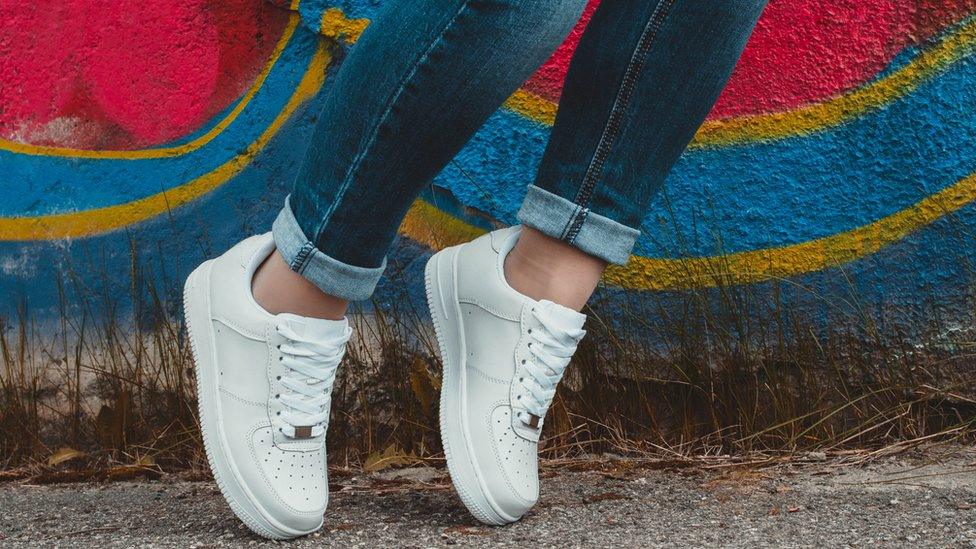Are changeable heels the end to women's sore feet?
- Published
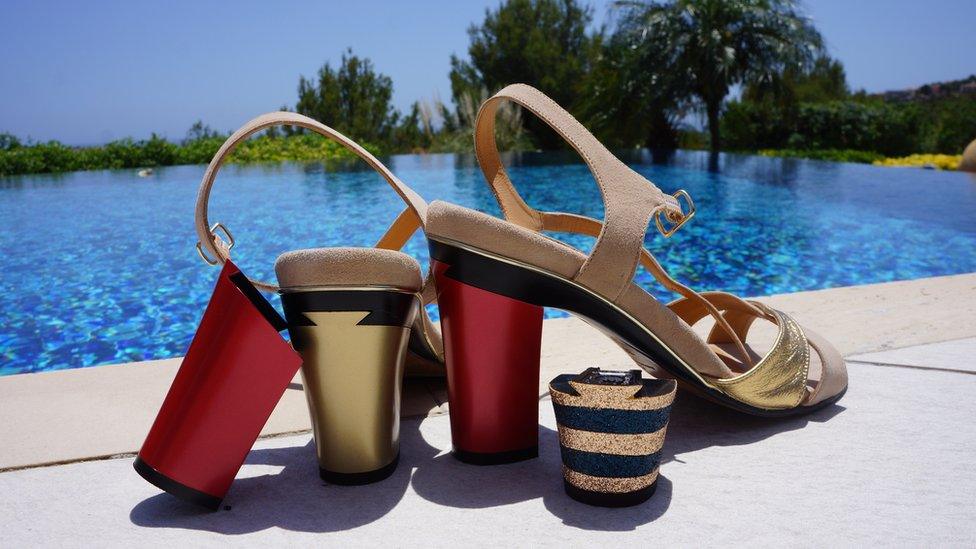
Tanya Heath Paris shoes come with changeable heels
"Give a girl the right shoes and she can conquer the world," film star Marilyn Monroe once said. But what constitutes "right" for women nowadays?
While high heels can make the wearer feel more confident, they aren't comfortable for long-term wearing. This means that many women carry around a spare pair of flats with them.
But what if one pair of shoes could do both jobs? Two small shoemaking firms, one in France and one in Germany, think they have the solution - women's shoes that come with interchangeable heels.
In her office in Ottawa, Canada, Olga Streltchenko is not just known as a top financial risk manager.
The 46-year-old also has a reputation for her shoes with removable heels.
"I am not very tall, so I like to be on high heels at work to enhance my presence," Mrs Streltchenko says.
"But I like to switch to lower, more comfortable heels to go home. And if I plan on going out after work, I take a pair of metallic heels with me, which are more playful."
The shoes, by Tanya Heath Paris, allow women to change their style from professional to casual, fancy to comfortable, high to low, simply by switching their heels.

Tanya Heath, pictured, came up with the idea after moving to Paris
Designer Tanya Heath came up with the idea for her shoes after moving to Paris in 1996.
The Canadian, who spent years working for firms in the telecoms and energy sectors, was tired of having to change her shoes every time she arrived or left the office.
"I would arrive in ballerina pumps and change into heels, and my French colleagues ridiculed me," she says.
"They called me 'la New Yorkaise', because of the perception that New Yorkers wore trainers with suits while walking to work."
In 2009, with no experience in the fashion industry, Ms Heath finally began to develop the idea - all while juggling her responsibilities as a mother-of-three.
The biggest challenge was to make shoes that were comfortable and stylish, she says. Since the 1980s, several firms had developed footwear with removable heels but none had been successful.
"Some of the other attempts out there were either awful-looking or worse, and they didn't really work, with the heels falling off," Mrs Heath says.
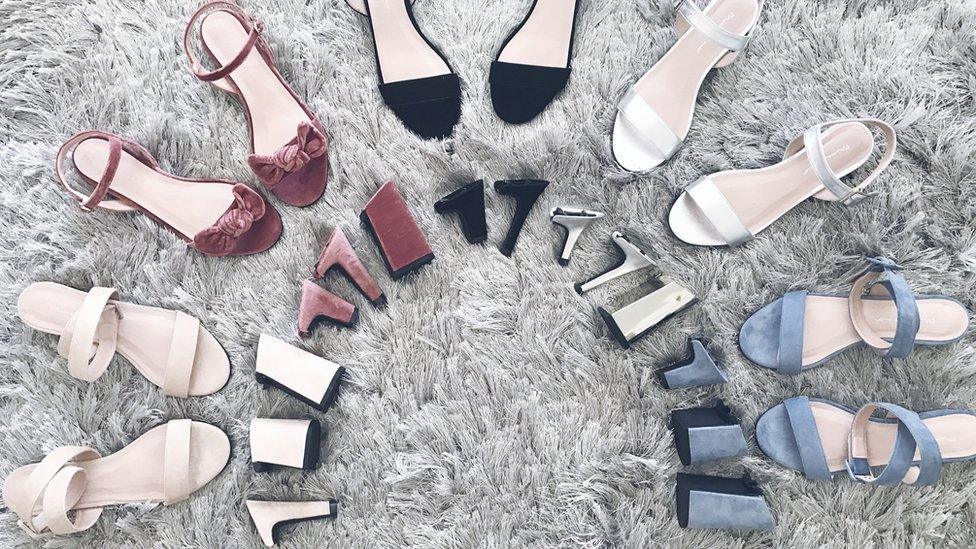
Mime et moi's shoes come with a variety of heels
Backed by a team of designers and engineers, she came up with a "pick and choose concept".
First women buy the shoes, sandals, pumps or boots, then they buy the heels of their choice.
Prices range from 290 euros (£260) for a pair of pumps, to 700 euros for a pair of leather boots. Customers can choose between 400 different heels, which cost between 25 and 100 euros each.
Ms Heath says her first few years in business were tough, with no sales and little outside investment.
But the firm has since shipped to 72 countries and opened boutiques in France, Portugal and Canada.
"We get girls coming into the stores who are clearly still in school, and we have women shopping for shoes to wear to their daughter's wedding," Mrs Heath says.
The healthy sales at Tanya Heath Paris comes as the issue of whether women should wear high heels to work continues to spark controversy.
In April of this year, the Canadian province of British Columbia banned companies from being able to force women to wear high heels, while that same month the UK government rejected a petition calling for a similar ban in Britain.

Women in British Columbia can no longer be forced to wear high heels to work
Hannah Rochell, founder of fashion blog EnBrogue.com, external, which promotes flat shoes, says: "While some women love to wear high heels, many would much rather opt for the comfort of flats, particularly when they're working in a business environment."
She adds that employers who enforce heels-only dress codes not only denigrate women, but are also "completely out of touch".
For firms that make shoes with removable heels, their products merely offer women choice.
Take Mime et moi, which was founded by four men from Munich, Germany. After a night out together, they noticed that their partners had all gone home barefoot because their feet were sore from wearing high heels.
One of the men, a student of mechanical engineering and construction, then set about finding a solution.
"We immediately thought it was something that was absolutely missing," says Tim Haas, 31, one of the firm's co-founders.

Mime et moi
"We wanted to create a shoe for women that looked amazing, sexy and feminine, but which had a comfort function."
They set up Mime et moi in 2013, and sold their first shoe three years later.
The firm's removable heels range from 3cm tall to 11cm, and cost between 175 and 205 euros.

More stories from the BBC's Business Brain series looking at quirky or unusual business topics from around the world:
Do the colours you wear at work matter?
Turning the dead into vinyl records

While some firms are focusing on removable heels, Californian Dolly Singh claims she has instead used engineering prowess to invent comfortable high heel shoes.
In 2013 she gave up her job as head of talent acquisition at SpaceX, the rocket company led by tech billionaire Elon Musk, to pursue a personal project - creating shoes that don't make your feet sore.
Ms Singh put together a team of experts from fashion, architecture, medicine and engineering, including specialists who worked for SpaceX and Nasa, the US space agency.

Dolly Singh gave up a job at SpaceX to create her shoes
She then launched her own business, Thesis Couture, and began selling the shoes that they had created.
"I ripped apart a pair of high heels to find out what was causing my feet to hurt so much," says Ms Singh.
"Inside each heel was a metal shank, which had no give, and was clearly not foot friendly."
The problem, she says, is that high heels are badly engineered.
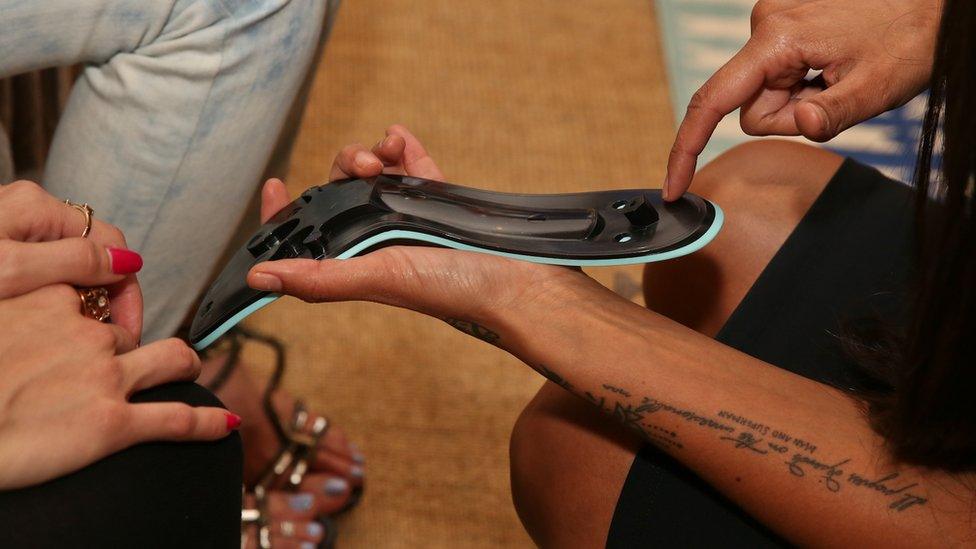
Ms Singh says her soles "more intuitively" map the shape of the foot
"The way heels are currently designed causes 80% of one's body weight to be on the balls of the feet and also causes the toes to curve slightly inward.
"What we did was shift that back to 60% by re-engineering the structure and designing our own shank, which is made of a strong-but-flexible polymer."
Thesis Couture sells its footwear online and now ships to most countries. Mrs Singh managed to raise more than $1.5m (£1.1m) in investment, in 2015 and anticipates sales of $1m in 2017.
- Published18 August 2017

- Published30 March 2017
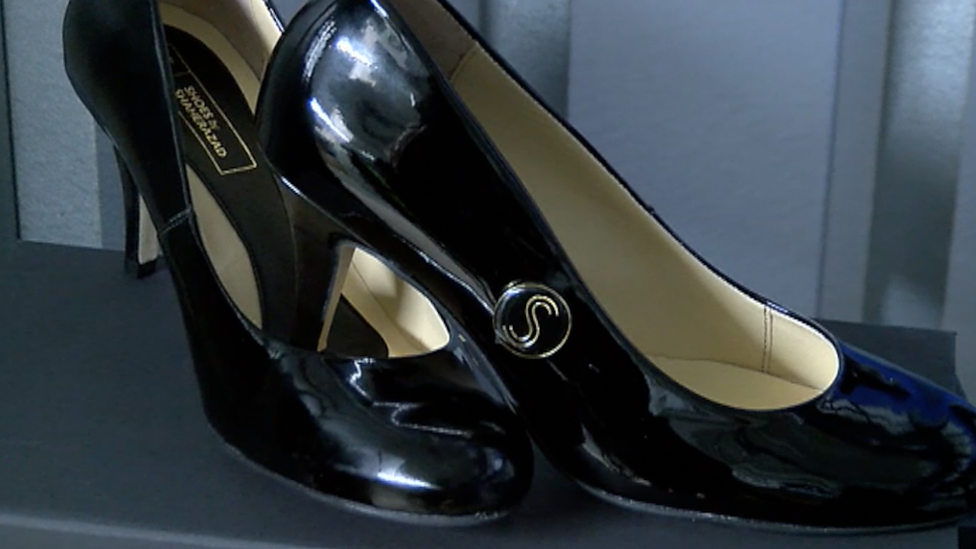
- Published21 April 2017

- Published7 April 2017

- Published30 September 2016
